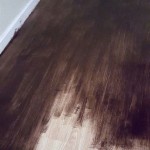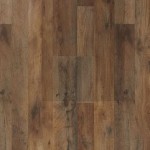Mohawk Engineered Hardwood Flooring Installation Instructions
Mohawk engineered hardwood flooring offers a blend of natural beauty and enhanced durability, making it a popular choice for residential and commercial spaces. Proper installation is critical to ensuring the longevity and performance of this flooring. These instructions provide a comprehensive guide to installing Mohawk engineered hardwood flooring correctly, covering essential preparation steps, installation techniques, and post-installation care.
Successful installation hinges on understanding the specific requirements of the selected Mohawk engineered hardwood product. Always consult the product's packaging and accompanying documentation for any specific instructions or recommendations that may differ from these general guidelines. Failure to adhere to specified recommendations may void warranties.
Pre-Installation Assessment and Planning
Before beginning the installation process, a thorough assessment of the installation site is essential. The subfloor must be structurally sound, clean, dry, and level. Any deficiencies in the subfloor can compromise the integrity of the finished floor, leading to problems such as squeaking, unevenness, and premature wear.
Subfloor Preparation: The subfloor must be free of debris, paint, adhesives, and other contaminants. Sweep, vacuum, and scrape the subfloor to remove any loose materials. For concrete subfloors, conduct a moisture test to ensure it meets the manufacturer's specified moisture content limits. Excess moisture can cause the hardwood to warp or buckle. Repair any cracks or imperfections in the subfloor with a suitable patching compound. For wood subfloors, ensure that they are securely fastened to the joists. Replace any damaged or loose boards. Sanding may be necessary to level uneven areas.
Acclimation: Acclimation is a crucial step in preparing the engineered hardwood flooring for installation. Allow the flooring to acclimate to the installation environment for at least 72 hours before beginning the installation. Store the unopened boxes of flooring in the room where they will be installed, ensuring proper airflow around the boxes. The ideal temperature and humidity levels will vary depending on the specific product, so refer to the manufacturer's instructions. Acclimation allows the wood to adjust to the room's temperature and humidity, minimizing expansion and contraction after installation.
Planning the Layout: Before starting the installation, carefully plan the layout of the flooring. Consider the direction of the planks and how they will align with the room's features, such as walls, doorways, and focal points. Aim for a balanced and aesthetically pleasing pattern. Calculate the amount of flooring needed, adding an extra 5-10% for waste and cuts. This ensures that you have enough material to complete the project without shortages.
Gather Tools and Materials: To ensure a smooth and efficient installation, gather all the necessary tools and materials before starting. This includes:
- Engineered hardwood flooring
- Moisture meter
- Measuring tape
- Pencil
- Straight edge or chalk line
- Saw (circular saw, miter saw, or hand saw)
- Tapping block
- Pull bar
- Hammer
- Spacers
- Moisture barrier (if required)
- Wood adhesive (if required, consult manufacturer specification)
- Safety glasses
- Knee pads
Installation Methods: Floating, Glue-Down, and Staple-Down
Mohawk engineered hardwood flooring can be installed using various methods, including floating, glue-down, and staple-down. The choice of installation method depends on the specific product, subfloor type, and personal preferences.
Floating Installation: Floating installation is a popular method for engineered hardwood flooring because it is relatively easy and does not require fasteners. The flooring planks are interlocked together to create a continuous surface that "floats" over the subfloor. A moisture barrier is typically installed underneath the flooring to protect it from moisture migration. This method is suitable for most subfloor types and is often preferred for DIY projects.
Glue-Down Installation: Glue-down installation involves adhering the engineered hardwood planks directly to the subfloor using a wood adhesive. This method provides a more stable and solid feel compared to floating installation. It is often recommended for larger areas or areas with high traffic. The subfloor must be clean, smooth, and level to ensure a proper bond. Selecting the correct adhesive recommended by the flooring manufacturer is essential for optimal results. Apply the adhesive evenly using a notched trowel, following the manufacturer's instructions.
Staple-Down Installation: Staple-down installation involves using staples or nails to secure the engineered hardwood planks to a wood subfloor. This method requires a pneumatic stapler or nailer and is typically used for solid wood flooring, but it can also be applicable for some engineered products specifically designed for this installation. The subfloor must be structurally sound and able to hold the staples or nails securely. Follow the manufacturer's instructions for the proper staple or nail type, length, and spacing.
Step-by-Step Installation Process
Regardless of the chosen installation method, the following steps provide a general guideline for installing Mohawk engineered hardwood flooring:
1. Prepare the Subfloor: Ensure the subfloor is clean, dry, level, and structurally sound, as described in the "Pre-Installation Assessment and Planning" section.
2. Install Moisture Barrier (If Required): If required by the manufacturer or recommended for the specific installation environment, install a moisture barrier over the subfloor. Overlap the seams of the moisture barrier and tape them together to create a continuous seal.
3. Establish a Starting Row: Begin the installation along a straight wall, such as the longest wall in the room. Use spacers between the wall and the first row of planks to allow for expansion and contraction. This prevents the flooring from buckling or warping due to changes in temperature and humidity.
4. Install the First Row: Align the first row of planks with the wall, ensuring that they are straight and square. Connect the planks using the interlocking system, tapping them together gently with a tapping block and hammer. For glue-down installation, apply adhesive to the subfloor according to the manufacturer's instructions and press the planks firmly into the adhesive. For staple-down installation, use a pneumatic stapler or nailer to secure the planks to the subfloor, following the recommended spacing.
5. Continue Installing the Flooring: Continue installing the flooring row by row, working across the room. Stagger the end joints of the planks to create a visually appealing and structurally sound floor. Use a tapping block and pull bar to ensure tight connections between the planks. For glue-down installation, clean up any excess adhesive immediately with a damp cloth. For staple-down installation, be careful not to damage the flooring surface with the stapler or nailer.
6. Cut Planks as Needed: When reaching the end of a row or around obstacles, such as pipes or doorways, measure and cut the planks as needed. Use a saw to make precise cuts, ensuring that the planks fit snugly against the wall or obstacle. Leave a small expansion gap between the flooring and the wall or obstacle.
7. Install the Last Row: Install the last row of planks, cutting them to fit the remaining space. Use a pull bar to tighten the connections between the last row and the previous row. Install baseboards or moldings to cover the expansion gaps along the walls. This provides a finished look and protects the edges of the flooring.
8. Inspect the Installation: After completing the installation, inspect the flooring for any gaps, unevenness, or other imperfections. Correct any issues immediately to prevent further problems. Clean the floor thoroughly with a damp cloth to remove any dust or debris.
Post-Installation Care and Maintenance
Proper care and maintenance are crucial for preserving the beauty and longevity of Mohawk engineered hardwood flooring. Follow these guidelines to protect your investment:
Regular Cleaning: Sweep or vacuum the floor regularly to remove dirt, dust, and debris. Use a soft-bristled broom or a vacuum with a felt brush attachment to avoid scratching the floor. Wipe up spills immediately with a damp cloth. Avoid using excessive water, as this can damage the flooring.
Use Recommended Cleaning Products: Use cleaning products specifically designed for engineered hardwood flooring. Avoid using harsh chemicals, abrasive cleaners, or steam mops, as these can damage the finish and void the warranty. Follow the manufacturer's instructions for the proper use of cleaning products.
Protect the Floor from Scratches: Place protective pads under furniture legs to prevent scratches and dents. Use rugs or mats in high-traffic areas, such as entryways and hallways. Avoid wearing shoes with high heels or cleats on the floor.
Control Humidity: Maintain a consistent humidity level in the room to prevent excessive expansion and contraction of the flooring. Use a humidifier or dehumidifier as needed to maintain the recommended humidity range. Avoid prolonged exposure to direct sunlight, as this can cause the flooring to fade.
Avoid Water Damage: Avoid prolonged exposure to water or moisture. Clean up spills immediately and repair any leaks promptly. Do not use wet mops or excessive water during cleaning. Consider using waterproof mats in areas prone to spills, such as kitchens and bathrooms.
By following these installation instructions and care guidelines, individuals can help ensure the lasting beauty and performance of Mohawk engineered hardwood flooring. Refer to the manufacturer's specific instructions for the chosen product for any supplemental guidance or recommendations.

Mohawk Flooring Hard Surface Installation Information From

Mohawk Flooring Hard Surface Installation Information From

Mohawk Engineered Hardwood Flooring Installation Instructions

Mohawk Flooring Hard Surface Installation Information From

Floating Floor Installation Instructions Onflooring

Mohawk Flooring Hard Surface Installation Information From

Installing And Cutting Mohawk S Instaform Profile Onflooring

Mohawk Revwood Faq Onflooring

Mohawk

Mohawk Tecwood Essentials Wood Flooring Instruction Manual
Related Posts








